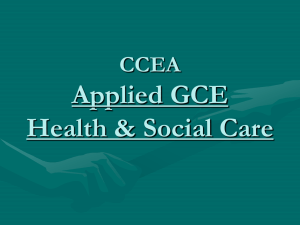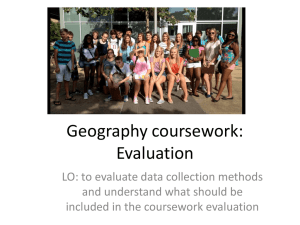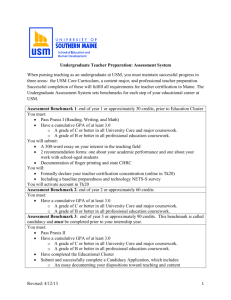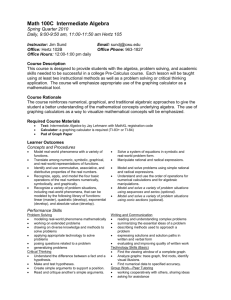Summary/Overview of Surveys
advertisement
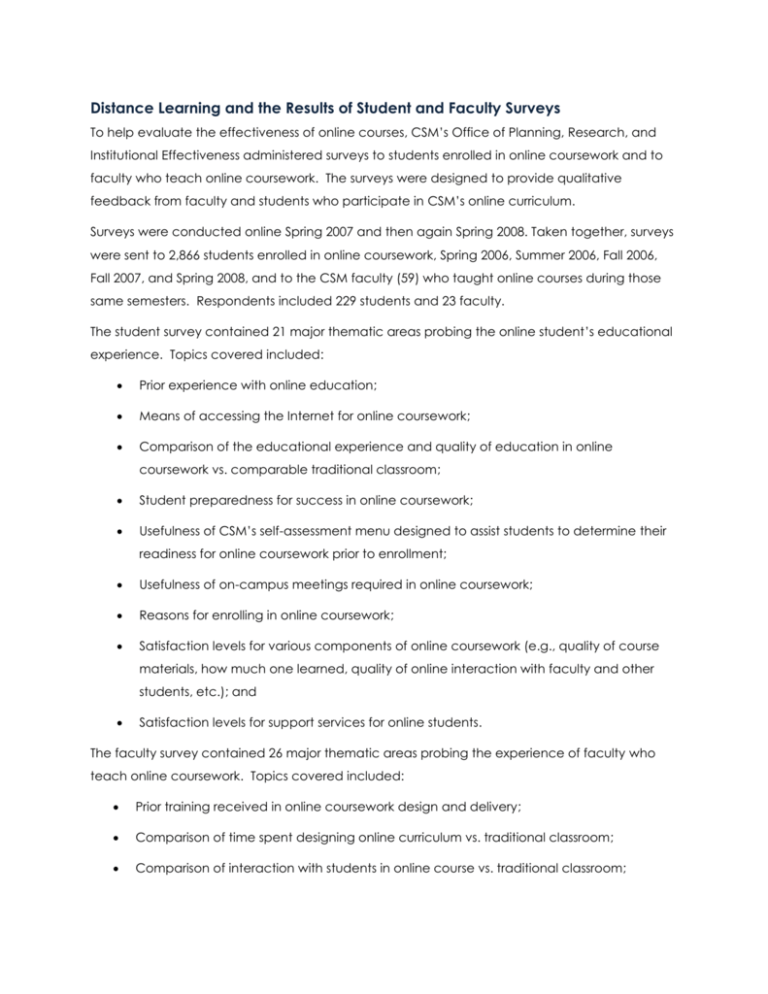
Distance Learning and the Results of Student and Faculty Surveys To help evaluate the effectiveness of online courses, CSM’s Office of Planning, Research, and Institutional Effectiveness administered surveys to students enrolled in online coursework and to faculty who teach online coursework. The surveys were designed to provide qualitative feedback from faculty and students who participate in CSM’s online curriculum. Surveys were conducted online Spring 2007 and then again Spring 2008. Taken together, surveys were sent to 2,866 students enrolled in online coursework, Spring 2006, Summer 2006, Fall 2006, Fall 2007, and Spring 2008, and to the CSM faculty (59) who taught online courses during those same semesters. Respondents included 229 students and 23 faculty. The student survey contained 21 major thematic areas probing the online student’s educational experience. Topics covered included: Prior experience with online education; Means of accessing the Internet for online coursework; Comparison of the educational experience and quality of education in online coursework vs. comparable traditional classroom; Student preparedness for success in online coursework; Usefulness of CSM’s self-assessment menu designed to assist students to determine their readiness for online coursework prior to enrollment; Usefulness of on-campus meetings required in online coursework; Reasons for enrolling in online coursework; Satisfaction levels for various components of online coursework (e.g., quality of course materials, how much one learned, quality of online interaction with faculty and other students, etc.); and Satisfaction levels for support services for online students. The faculty survey contained 26 major thematic areas probing the experience of faculty who teach online coursework. Topics covered included: Prior training received in online coursework design and delivery; Comparison of time spent designing online curriculum vs. traditional classroom; Comparison of interaction with students in online course vs. traditional classroom; Reliability of technology used for online instruction; Faculty assessment of “W” rates for online students vs. traditional classroom; Comparison of online students’ overall academic performance vs. traditional classroom; Modes of communication with online students; Faculty compensation for online coursework; Overall preference for teaching online vs. comparable traditional course; Reasons for teaching online coursework at CSM; Barriers to teaching online coursework at CSM; and Barriers to student success in online coursework at CSM. Online Student Survey: Major Findings Overall, 88% of online students surveyed indicated that they would enroll in additional online coursework at CSM. 56% of online students felt that online coursework was more academically demanding than traditional coursework. 47% of online students reported that they “enjoy” online course work more than oncampus coursework; 26% reported “enjoyment” levels the same. 71% of online students reported their academic performance was equivalent to or better than in the traditional classroom. Nearly one-third of students have enrolled in online coursework at colleges other than CSM. Approximately 80% of students felt they were prepared to succeed in online coursework. 75% of online students viewed on-campus meetings as helpful. Nearly 90% of online students indicated that the self-assessment menu for determining readiness for online coursework was useful. Online students give very high satisfaction ratings (80%+) to online coursework curriculum, materials, quality of instruction, accessibility of instructor, etc. The lowest satisfaction rating (58%) was given to the level of “interaction with other students.” Overall, online students gave very high satisfaction ratings for most online support services. Online Faculty Survey: Major Findings 50% of faculty have been teaching online 1 – 3 years; the other 50% have been teaching online 5 years or more. 83% of faculty feel they spend more time developing lesson plans for online coursework vs. traditional classroom. Nearly two-thirds of faculty indicate that they engage in more one-to-one communication with students than with students in the traditional classroom environment. 17% indicated that communication levels were about the same. Only 13% of faculty reported dissatisfaction with the technology used in teaching and delivery of online coursework. 41% of faculty indicated that the “W” rate of students in online coursework is “much higher” than in comparable traditional classroom. 25% of faculty indicated that the overall academic performance of students in online coursework is “better” than students in comparable traditional classroom; 58% indicated that is “about the same.” 96% of faculty indicated that compensation levels for teaching online coursework were the same as traditional classroom compensation. Only 35% of faculty indicated a preference for teaching online coursework vs. traditional coursework. 67% of faculty feel that “at least one face-to-face meeting” with online students as a group is important. 83% of faculty report being “self-taught” in terms of online coursework design and/or delivery. 100% of faculty report teaching online as “a convenience for students.” 78% report teaching online in order to “expand student learning opportunities.” Only 4% of faculty report teaching online to “reduce my travel time.” The 3 largest barriers to online education at CSM reported by faculty are: (1) inadequate faculty compensation for course development – 86%; (2) insufficient time for development – 86%; and (3) disproportionate amount of work compared to traditional coursework – 71%.
